

Diana Muldaur
- View history
Muldaur had previously appeared in two episodes of Star Trek: The Original Series (" Return to Tomorrow " and " Is There in Truth No Beauty? "), playing two different characters who also held the title of "Doctor." Muldaur filmed her scenes for "Return to Tomorrow" between Monday 20 November 1967 and Tuesday 28 November 1967 at Desilu Stage 9 and Stage 10 , and her scenes for "Is There in Truth No Beauty?" between Tuesday 16 July 1968 and Wednesday 24 July 1968 at Stage 9 and Stage 8.
In 1988 , Muldaur was cast as Dr. Pulaski for the second season of The Next Generation as a replacement for Gates McFadden , the actress who played Beverly Crusher in the first season. McFadden had some sort of falling out with the show's producers, especially Maurice Hurley , and left (or was asked to leave) the show, and Muldaur was brought on board. However, following the end of the second season, the issues with McFadden were resolved and she returned to the series. Muldaur's last appearance as Dr. Pulaski was " Shades of Gray ", the final episode of the second season. On 20 September 1988 Muldaur was interviewed and these interviews were later published on the TNG Season 2 DVD in the special features "Mission Overview Year Two" ("Diana Muldaur", "Gene Roddenberry") and "Selected Crew Analysis Year Two". In these interviews Muldaur told that she had moved into the high desert Sierra Nevada with her husband in 1988 when she got a call to work on The Next Generation and couldn't resist.
Among the props and costumes auctioned off on the It's A Wrap! sale and auction on eBay were a face mold and her costume from the episode " Unnatural Selection ". [1] [2]
- 1 Career outside Star Trek
- 2.1 Recurring appearances
- 3 Star Trek interviews
- 4 Other Star Trek connections
- 5 External links
Career outside Star Trek [ ]
Muldaur began her television career with a recurring role on the soap opera The Secret Storm in 1965, on which John Colicos also starred. She followed this with a recurring role as Jeannie Orloff on the medical drama Dr. Kildare , guest-starring in five episodes along with her future Original Series co-star William Shatner as well as fellow Original Series guest star Bruce Hyde . In 1969, she became a regular on the short-lived series The Survivors , which lasted only 15 episodes. Following this series' end, however, Muldaur was cast in the role of Chris Coughlin in the crime drama McCloud , which lasted seven seasons from 1970 through 1977. Fellow Original Series guest performer Ken Lynch was also a regular performer on this series; the two of them had previously co-starred together in a 1968 episode of The Outcasts called "A Ride to Vengeance", along with Erik Holland .
In 1976, she and Next Generation guest star David Ogden Stiers participated in the pilot episode of the hit action series Charlie's Angels . That same year, Muldaur became a regular on The Tony Randall Show , which lasted for two seasons from 1976 through 1978. Her other TV credits throughout the 1970s include: the Police Woman episode "Solitaire" (1977) along with Next Generation and Star Trek: Deep Space Nine director Corey Allen and guest performers Richard Lynch and Eugene Roche ; the 1977 TV movie The Deadly Triangle , in which she played the wife of Robert Lansing 's character; an episode of The Hardy Boys/Nancy Drew Mysteries , starring Phillip Richard Allen and William Schallert ; the 1978 mini-series Black Beauty , with John de Lancie and Brock Peters ; and another 1978 mini-series, The Word , co-starring Star Trek: Voyager 's Kate Mulgrew as well as Jonathan Banks , Christopher Lloyd and Nehemiah Persoff .
Muldaur's prolific career spans not only television, but films as well. One of Muldaur's earliest film appearances was in 1969's Number One , co-starring fellow Original Series guest star Roy Jenson . She then co-starred with Barry Newman in the 1970 movie The Lawyer, which became the 1974-76 NBC series Petrocelli . She was unavailable for the series, and was replaced by Susan Howard . In 1971, Muldaur co-starred with another Original Series guest actress, France Nuyen , in the Western film One More Train to Rob . In 1974, she co-starred with John Wayne in one of the latter's final films, McQ . That same year, she starred in movies, Chosen Survivors with Barbara Babcock and "Planet Earth".
In 1980, Muldaur made her first of three appearances as Dr. Janet Carlyle on the medical drama Quincy , a series which featured Robert Ito and Garry Walberg as regulars. The following year, Muldaur co-starred with Harry Mudd actor Roger C. Carmel in the short-lived adventure series Fitz and Bones . She also co-starred with Carmel in the Fitz and Bones TV movie Terror at Alcatraz in 1982 (which also featured appearances by Elisha Cook , Marc Lawrence , Michael Pataki , and Georgia Schmidt ).
After her tenure as Dr. Pulaski came to an end, Muldaur found herself playing the recurring role of litigator Rosalind Shays on the hit drama L.A. Law , appearing in 24 episodes between 1989 and 1991. She received two Emmy Award nominations for her performance on this series. Her last episode was the infamous "Good to the Last Drop", in which her character was killed after falling down an empty elevator shaft. Among her co-stars on the program were series regulars Corbin Bernsen and Larry Drake , as well as Daniel Benzali , Roy Brocksmith , Richard Cox , Steven Culp , John de Lancie, Lawrence Dobkin , Susan Gibney , John Glover , Anne Haney , Jennifer Hetrick , Sherman Howard , Jack Kehler , Lance LeGault , Deborah May , Warren Munson , Charles Napier , Natalia Nogulich , Frank Novak , Nehemiah Persoff, Ethan Phillips , Andrew Robinson , Concetta Tomei , George D. Wallace , Ray Walston , and Paul Winfield .
From 1992 to 1993, Muldaur lent her voice to the character of Dr. Leslie Thompkins on Batman: The Animated Series . Those she worked with on this series include Adrienne Barbeau , Joseph Campanella , Paul Williams , Robert Costanzo , and John de Lancie.
Muldaur is a former board member of the Screen Actors Guild. She also served a tenure as president of the Academy of Television Arts and Sciences. Having retired from acting in 1993, Muldaur is currently active as a dog-breeder and a judge at dog shows.
Star Trek appearances [ ]
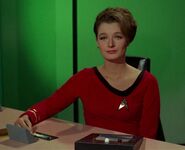
Recurring appearances [ ]
- " The Child "
- " Where Silence Has Lease "
- " Elementary, Dear Data "
- " Loud As A Whisper "
- " The Schizoid Man "
- " Unnatural Selection "
- " A Matter Of Honor "
- " The Measure Of A Man "
- " The Dauphin "
- " Contagion "
- " The Royale "
- " Time Squared "
- " The Icarus Factor "
- " Pen Pals "
- " Samaritan Snare "
- " Up The Long Ladder "
- " Manhunt "
- " The Emissary "
- " Peak Performance "
- " Shades of Gray "
Star Trek interviews [ ]
- "Diana Muldaur: Prescription Enterprise ", The Official Star Trek: The Next Generation Magazine issue 7 , p. 4, interviewed by Bill Warren
- "Diana Muldaur – Dr. Katherine Pulaski", The Official Star Trek: The Next Generation Magazine issue 8 , pp. 12-15, interviewed by Frank Garcia
- The Star Trek Saga: From One Generation To The Next , interviewed on 20 September 1988 (excerpts from the same interview are featured in TNG Season 2 DVD -special features, "Mission Overview Year Two" ("Diana Muldaur", " Gene Roddenberry ") and "Selected Crew Analysis Year Two")
- TNG Season 2 Blu-ray -special feature, "New Life and New Civilizations", 2012 (new interview)
- William Shatner Presents: Chaos on the Bridge , 2014
Other Star Trek connections [ ]
- Run for Your Life episode "Night Train from Chicago" (1966) with Brock Peters
- Gunsmoke episode "Fandango" (1967) with Paul Fix
- I Spy episode "This Guy Smith" (1968) with Kenneth Tobey , and directed by Ralph Senensky
- The Invaders episode "The Life Seekers" (1968) with Stephen Brooks and Paul Comi
- Felony Squad episode "The Distant Shore" (1968) with Robert DoQui and Victor Tayback
- The F.B.I. episode "Act of Violence" (1968) with Hal Baylor , Paul Comi, and Michael Strong and directed by Gene Nelson
- The Mod Squad episode "Loser" (1970) with Tige Andrews and Clarence Williams III
- The Virginian episode "The Politician" (1971) with William Windom
- The Name of the Game episode "Beware of the Watchdog" (1971) with Richard Kiley and James B. Sikking
- Marcus Welby, M.D. episode "The Tender Comrade" (1971) with Clint Howard
- Mannix episode "A Gathering of Ghosts" (1971) with Jason Evers and Alan Oppenheimer
- Hawaii Five-O episode "Death Wish on Tantalus Mountain" (1972) with Ricardo Montalban
- Owen Marshall: Counselor at Law episode "Charlie Gave Me Your Number" (1972) with John Hoyt and Bill Quinn
- Hec Ramsey episode "The Mystery of the Yellow Rose" (1973) with Ian Wolfe
- Call to Danger (1973 TV movie) with Michael Ansara , Roy Jenson and William Smithers
- Search episode "Ends of the Earth" (1973) with Keith Andes and Jay Robinson , and directed by Ralph Senensky
- Ordeal (1973 TV movie) with Michael Ansara, Bill Catching , and Arch Whiting
- A Special Act of Love (1973 TV movie) with Laurence Luckinbill
- Hog Wild (1974 TV movie) with William Lucking
- Planet Earth (1974 TV movie) with Majel Barrett , Craig Huxley , Patricia Smith and Ted Cassidy , and directed by Marc Daniels , produced by Robert H. Justman , and featuring Gene Roddenberry as writer and executive producer
- S.W.A.T. episode "Terror Ship" (1975) with Paul Carr and Don Keefer
- Ellery Queen episode "The Adventure of the Judas Tree" (1976) with Michael Pataki
- Beyond Reason (1977 film) with Biff Elliot
- Cry for Justice (1977 film) with Sharon Acker
- Police Story episode "Pressure Point" (1977) with Meg Foster
- To Kill a Cop (1978 TV movie) with Robert Hooks and Alan Oppenheimer
- Fantasy Island episode "Photographs/Royal Flush" (1979) with Ricardo Montalban and John Rubinstein
- The Return of Frank Cannon (1980 TV movie) with Tom Morga , William Smithers, and Paul Sorensen
- The Incredible Hulk episode "Sanctuary" (1981) with Henry Darrow
- Murder, She Wrote episode "Footnote to Murder" (1985) with Kenneth Mars , William Windom and Biff Yeager
- A Year in the Life (1986 TV mini-series and subsequent TV series) with Richard Kiley
- Agatha Christie's Murder in Three Acts (1986 TV movie) with Concetta Tomei
- Matlock episodes "The Trial: Part 1" and "Part 2" (1991) with Vince Howard
- Hearts Are Wild (1992 TV series) with Warren Munson
External links [ ]
- Interview at EmmytTvLegends.com
- Diana Muldaur at the Internet Movie Database
- Diana Muldaur at the Internet Broadway Database
- Diana Muldaur at Wikipedia
- 2 ISS Enterprise (NCC-1701)

Diana Muldaur's 3 Star Trek TOS & TNG Characters Explained
- Diana Muldaur played three different characters in the Star Trek franchise, all of whom happened to be doctors.
- In her appearances on Star Trek: The Original Series, Muldaur played Dr. Ann Mulhall and Dr. Miranda Jones.
- Muldaur later joined Star Trek: The Next Generation as Dr. Katherine Pulaski, the Chief Medical Officer of the USS Enterprise-D.
Diana Muldaur has played three different Star Trek characters in Star Trek: The Original Series and Star Trek: The Next Generation . Diana Muldaur is one of the few actors to have visited both the Enterprise of Captain James T. Kirk (William Shatner) and Captain Jean-Luc Picard's (Patrick Stewart) Enterprise-D. While Leonard Nimoy, Deforest Kelley, and James Doohan all briefly reprised their original roles on TNG , Muldaur played different characters in all three of her Star Trek appearances. While none of her three characters are related, all of them happen to be doctors.
In Star Trek: The Original Series season 2, episode 2, "Return To Tomorrow," Diana Muldaur plays Dr. Ann Mulhall, an astrobiologist on the Enterprise. Later, in TOS season 3, episode 5, "Is There In Truth No Beauty?," Muldaur plays the unrelated character of Dr. Miranda Jones, a telepathic psychologist. While on TOS , Muldaur became friends with Star Trek creator Gene Roddenberry , which led him to cast her in some of his other projects, including TNG . She went on to portray Dr. Katherine Pulaski in 20 episodes of Star Trek: The Next Generation season 2.
Outside of Star Trek , Diana Muldaur is perhaps best known for playing lawyer Rosalind Shays on L.A. Law , a role that earned her two Emmy nominations.
How To Watch All Star Trek TV Shows In Timeline Order
Dr. ann mulhall, star trek: the original series season 2, episode 2 - "return to tomorrow".
In Star Trek: The Original Series ' "Return to Tomorrow," Diana Muldaur's Dr. Ann Mulhall joins Captain Kirk, Spock (Leonard Nimoy), and Dr. Leonard McCoy (DeForest Kelley) as part of an away team where they encounter a powerful, god-like being named Sargon (voiced by James Doohan). Sargon and his two companions, Henoch and Thalassa, had survived the destruction of their planet and had stored their minds in glowing spheres. These beings requested to inhabit the bodies of Kirk, Spock, and Dr. Mulhall to construct android bodies they could then transfer themselves into. In the bodies of Spock and Mulhall, Henoch and Thalassa try to take over their new bodies permanently, but are eventually stopped by Sargon and the Enterprise crew.
Dr. Ann Mulhall holds the rank of Lieutenant Commander, making her the highest-ranking female officer to appear on Star Trek: The Original Series .
Since Dr. Mulhall spends most of the episode being possessed by Thalassa, not much is learned about her as a character. Mulhail served as an astrobiologist and must have been a fairly recent addition to the USS Enterprise crew , as Captain Kirk did not recognize her when she joined their landing party. Mulhall was initially reluctant to allow Thalassa's mind to inhabit her body, correctly suspecting the beings had ulterior motives. She eventually agrees and very nearly loses her body in the process.
Dr. Miranda Jones
Star trek: the original series season 3, episode 5 - "is there in truth no beauty".
In her second Star Trek appearance, Diana Muldaur portrays Dr. Miranda Jones , a telepathic psychologist who arrives on the Enterprise alongside the Medusan Ambassador Kollos. The Medusans were non-corporeal beings whose appearance drove humans insane, so Kollos boarded the Starship Enterprise in a transport carrier. With the aid of a protective visor, Jones could look upon Kollos, as could Spock, due to his telepathic abilities. Jones had spent four years on Vulcan honing her psychic abilities so she could block out unnecessary noise.
Jones was also unaffected by Kollos' appearance because she was blind , although she did not want others to know this. She wore a beautifully designed sensor web over her dress, which allowed her to perceive the objects and people around her. Although Jones exhibited some jealousy of Spock because of his higher Vulcan telepathic abilities , she generally wished to avoid human emotions. Despite her jealousy, she saved Spock's life when he inadvertently viewed Kollos without a visor. Jones later established a true mental link with Kollos that brought her a sense of peace and allowed her to carry on with her assignment.
Dr. Katherine Pulaski
Star trek: the next generation season 2.
After Gates McFadden was not asked to return as Dr. Beverly Crusher for Star Trek: The Next Generation season 2, Diana Muldaur was brought aboard as Chief Medical Officer of the USS Enterprise-D . Dr. Katherine Pulaski was meant to be a female version of Bones from Star Trek: The Original Series, but this did not quite work. Diana Muldaur did her best with the role and Dr. Pulaski had her moments, but overall, the character simply didn't gel with the cast of TNG . In her earliest days on the Enterprise, Pulaski was particularly rude to and dismissive of the android Lt. Commander Data (Brent Spiner), but she warmed to him throughout the season.
Doctor Crushers Replacement Actor Contradicts Rumors Of Her Star Trek: TNG Exit
An intelligent and competent doctor, Pulaski was particularly skilled at heart surgery , and she saved the life of Captain Picard in TNG season 2, episode 17, "Samaritan Snare." Despite her sometimes prickly personality, Pulaski cared deeply about her patients and fought to help those in need. Although Dr. Pulaski only served on the Enterprise-D for one season, she was a part of some great episodes of TNG and Diana Mulduar has certainly left an indelible mark on the Star Trek franchise.
Star Trek: The Original Series & Star Trek: The Next Generation are available to stream on Paramount+.
Streaming Service(s)
Franchise(s)

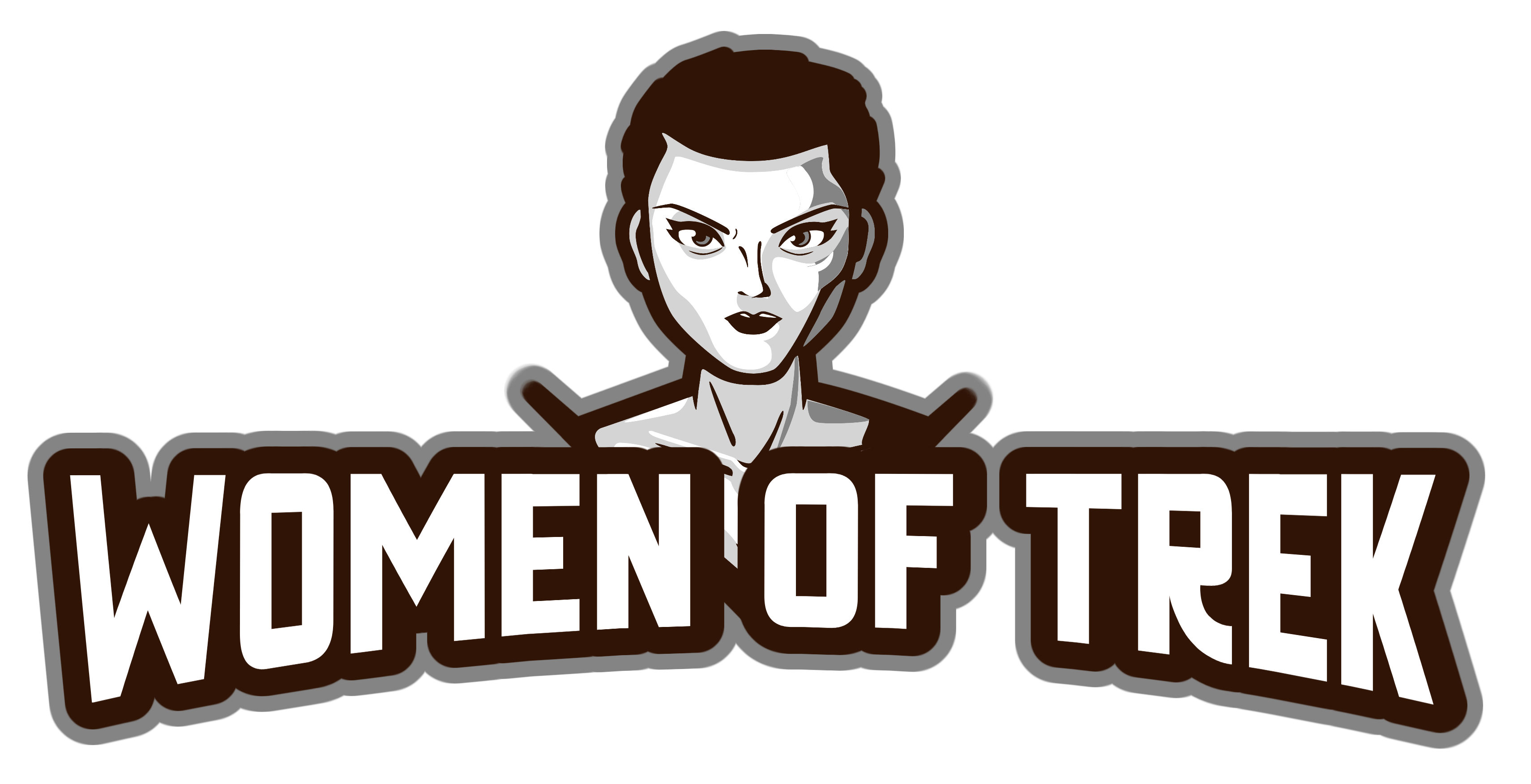
Diana Muldaur
Series: TOS, TNG
Roles: Science Officer Dr. Ann Mulhall (TOS), Dr. Miranda Jones (TOS), Dr. Katherine Pulaski (TNG)
In 1968, she appeared in the original Star Trek episodes “Return to Tomorrow” (as Science Officer Dr. Ann Mulhall), and in “Is There in Truth No Beauty?” as Dr. Miranda Jones.
In 1988, Muldaur was cast as Dr. Pulaski for the second season of TNG as a replacement for Gates McFadden, the actress who played Beverly Crusher in the first season. Following the end of the second season McFadden returned to the series. Muldaur’s last appearance as Dr. Pulaski was “Shades of Gray”, the final episode of the second season.

Like what you see? Buy us a Coffee!
Privacy Overview
Navigation menu
- Mission Logs
- Chronologies
- Library Computer
Return to Tomorrow (Episode)
Stardate 4768.3 : Telepathic aliens take over Kirk and Spock's bodies.
Answering a mysterious distress call from Arret [1] —a planet thought long dead— Kirk , McCoy , and Dr. Ann Mulhall are transported underground to confront the last three survivors of that world's civilization. Sargon , Thalassa , and Henoch have preserved their conscious minds within spherical containers, and have remained in this state for centuries. They now wish to "borrow" the bodies of Kirk, Spock , and Dr. Mulhall so that they can construct android bodies to house their minds on a permanent basis. Sargon assures Kirk that his people will be safe, their minds encased for a short time within the same containers his people now occupy. McCoy is concerned about the high metabolic rate necessary for "possession." The real danger, however, is Henoch, who appropriates Spock's body without any intention of returning it. Henoch telepathically forces Nurse Chapel to poison Sargon (in Kirk's body) and then destroys the globe that houses Spock's mind. Fortunately, Spock's consciousness had already left the globe, hidden within the mind of Nurse Chapel. Henoch is tricked into leaving Spock's body, and is destroyed. Sargon and Thalassa vacate the bodies of Kirk and Dr. Mulhall voluntarily, announcing (after one last kiss) that they will be happy to roam throughout the universe together in their noncorporeal state.
- 1 Image Gallery
- 2 Related Data
- 4 Notes and References
Image Gallery
Command officer
electronics
telekinesis
Related Data
Created by Gene Roddenberry
Starring William Shatner
Also Starring Leonard Nimoy as Mr. Spock and DeForest Kelley as Dr. McCoy
Written by John Kingsbridge
Directed by Ralph Senensky
Produced by John Meredyth Lucas
Executive Producer Gene Roddenberry
Associate Producer Robert H. Justman
Guest Star Diana Muldaur as Ann Mulhall
James Doohan … Scott Nichelle Nichols … Uhura George Takei … Sulu Cindy Lou … Nurse and Majel Barrett … Christine Chapel
Uncredited James Doohan … Sargon (Voice)
Script Consultant D.C. Fontana
Assistant to the Producer Edward K. Milkis
Theme Music by Alexander Courage
Music Composed and Conducted by George Duning
Director of Photography Jerry Finnerman
Art Director Walter M. Jefferies
Film Editor … Donald R. Rode Unit Production Manager … Gregg Peters Assistant Director … Phil Rawlins Set Decorator … John M. Dwyer Costumes Created by … William Ware Theiss Photographic Effects … Vanderveer Photo Effects Sound Effects Editor … Douglas H. Grindstaff Music Editor … Jim Henrikson Re-Recording Mixer … Elden E. Ruberg , C.A.S. Production Mixer … Carl W. Daniels Script Supervisor … George A. Rutter Casting … Joseph D'Agosta Sound … Glen Glenn Sound Co. Makeup Artist … Fred B. Phillips , S.M.A. Hair Styles … Pat Westmore Gaffer … George H. Merhoff Head Grip … George Rader Property Master … Irving A. Feinberg Special Effects … Jim Rugg Key Costumer … Ken Harvey
A Paramount Production In Association With Norway Corporation
Executive in Charge of Production Herbert F. Solow
Notes and References
- ↑ The name of the planet was not given in the final episode, but was taken from an earlier draft of the script.
- Prime Timeline
- 23rd Century
- Privacy policy
- About Trekipedia
- Disclaimers
- Login / Create Account
- More to Explore
- Series & Movies
Published Jan 11, 2013
Catching Up With Diana Muldaur, Part 1
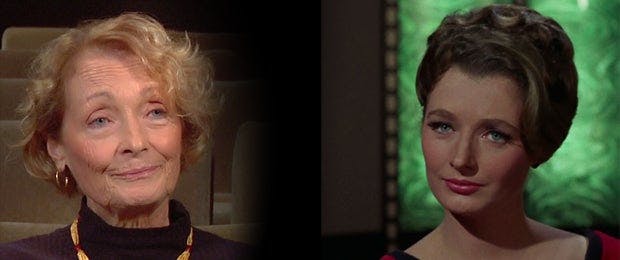
Diana Muldaur is a most-formidable woman, and many of her best characters over the years have shared that same trait. Two, of course, immediately spring to mind: Dr. Katherine Pulaski on Star Trek: The Next Generation and Rosalind Shays on L.A. Law . Crafting those ladies, Muldaur brilliantly meshed an icy-cool demeanor, smarts, a certain sense of style and – more with Dr. Pulaski than Shays – a touch of warmth. Fans haven’t seen much of the actress lately, as she spent several years back in her family home on Martha’s Vineyard tending to her husband, film and television writer Robert Dozier, who passed away on January 6, 2012, following a lengthy illness. Now, however, Muldaur – who also portrayed Dr. Ann Mulhall in the TOS hour “ Return to Tomorrow ” and Dr. Miranda Jones in another TOS episode, “ Is There In Truth No Beauty? ” -- is slowly stepping back into spotlight.She attended Creation Entertainment’s Official Star Trek Convention in Las Vegas this past August, sat for an interview included among the extras on the recently released Star Trek: The Next Generation Season Two Blu-ray set, and told StarTrek.com during a recent conversation that she’s eager to get back into the game, perhaps as a producer. Below is part one of our extensive interview with Muldaur, and be sure to visit StarTrek.com again tomorrow to read part two.
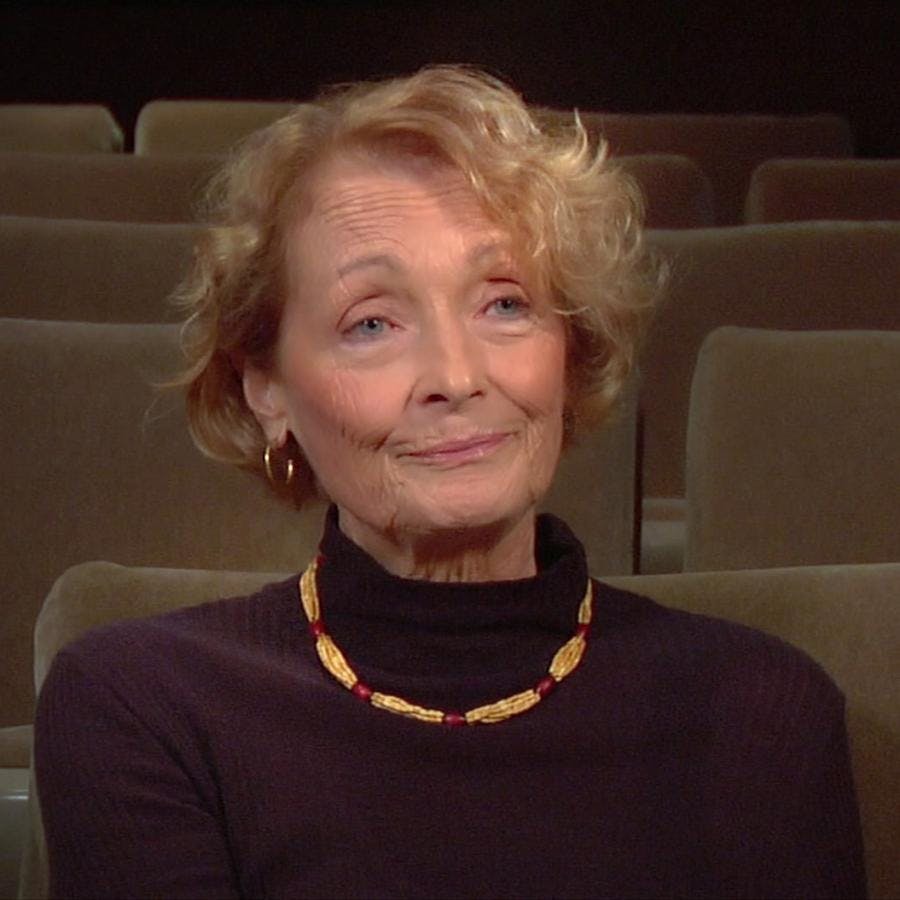
First, how are you? Please fill us in on what life has been like for you the past few years… Muldaur: I’m doing well, thank you, other than this cold I’ve been fighting. I’ve been keeping busy. One of my projects has been working for an animal shelter. It’s called the Animal Shelter of Martha’s Vineyard, and it’s up and running. Of course, it’s a huge job to keep dollars coming in to non-profits, but every cent that comes in is used. We have two employees, but we don’t have an executive director. The board is the executive director, and I’m on the board. So, everything that does come in goes directly to the animals. You don’t consider yourself retired, right? Muldaur: You have to understand, actors do not ever retire. They just fade away. Can we assume you’re not comfortable fading away? Muldaur: Not very (laughs), because I’ve always been a workaholic, which is why I did what I did when I did it. I did just about everything. I must say that I turned a lot down that I didn’t approve of or that I thought was violent. I’m not into violence. I’m into the dignity of human beings. So I did anything that I thought I could bring an ounce of dignity to, no matter who it was. Certainly by the last 10 years of my career I only did things for people and with people who I thought were really good people. I’d found that making a living with people who were not good people wasn’t worth it anymore. So, now, after many years of caregiving and my husband’s death, which kept me out of almost everything, which I was happy to do for him, and which I would do 900 times again, I’m trying to find myself again and who I am again. So it was fun to go to the Star Trek convention this summer and go, “Wait, there was another part of me, and that was a very strong part of me. And these people are a part of me, also.” So that’s what I’m doing, working on who I am and what I want to do. Do I want to produce something? Do I want to get up on the stage in New York, because I haven’t had my face fixed and I’m not going to be doing film? So I’m working on that. You mentioned the convention. What was that like for you? Did you enjoy it? What did the fans most want to hear about? Muldaur: I absolutely loved doing the Star Trek convention because the people are so wonderful. They’re third generation now, and possibly fourth generation, for all I know. Some of them have named their children after my characters. So they are my extended family. Often you don’t see your extended family for a long time, so it’s always a joy to see them. There was a nice turnout, I thought. I had a lovely time. The people’s questions are mostly, as anyone in any family would ask, along the lines of “How are you?” or, if they knew I’d lost my husband, they’d say, “I’m so sorry that you lost your husband.” And they asked about the shows, of course. You also sat down before a camera to share your memories of TNG for the Season Two Blu-ray. How quickly did the memories of your year on TNG return to you? Muldaur: They will be there forever. It was hard work. Either I carried a whole episode occasionally, or I was on and off the set a huge amount of time. Those things never leave you. Also, there was a lot of confusion at Paramount and what The Next Generation was really about and, etc., etc., etc. We had lot of interesting people coming through: interesting writers, an interesting cinematographer in the second year. It was a lovely, lovely group of people to work with, but there was a lot of change and chaos, to some degree, to go through.

We’ll talk more about TNG , but let’s first turn the clock all the way back to 1968, to almost 45 years ago, when you made your first appearance on TOS as Dr. Ann Mulhall in “Return to Tomorrow.” How did you land the role? Muldaur: I don’t have a clue. I’m assuming they called my agent, that they’d seen something I had done and put in a call. Or maybe my agent sent in my name. I have no idea. I do know that I was sent the script and that I didn’t have to go in and read for it. I actually never read for any Star Trek thing. What do you remember of playing Dr. Mulhall? Muldaur: I actually have (laughs) a VHS tape of the episode. I don’t have a DVD of it. And I have to look at it. The episode is still bound. It still has the plastic wrap on it. But I do remember an incredible crew. I remember a brilliant costume man. I remember meeting all the people. Shatner was one of the best young actors out of Canada. He wasn’t young by me; he’s older than I, but he was a very good actor who’d done some very wonderful performances in things before Star Trek . All of them were very interesting, very good people. I remember incredible lighting. They could make you incredibly gorgeous in a second. Your second TOS episode was “Is There In Truth No Beauty?”…

Muldaur: That second one I did, I remember going over to meet with Sidney Furie, to talk to him about a movie he was doing called The Lawyer . That was also at Paramount, and because I had no time, I went over to him to talk about this movie while I was in my wig that I was wearing for Star Trek. And I got that. I ended up doing that movie out of the second Star Trek episode I did. I actually remember more about “Is There In Truth No Beauty?” than I do about the first one. Like always, it went through my agent. It’s always through your agent. You get a script and tell your agent you’re interested or not interested. What was interesting on this episode is we sat down, did a reading, and they threw out the entire script. We then got scenes brought to us every morning, which we read, memorized and shot, and none of them were in sequence. I remember thinking, “How can they possibly do it this way? This is totally inane. I can’t believe this is happening.” They had no idea what happened before we did a scene or what would happen after we did a scene. And it was extraordinary. That one, I really did look at the episode because I couldn’t believe they’d ever put it together. It was absolutely wonderful and there was no way you could tell, absolutely no way you could tell that that’s what happened with that.For part two of our exclusive interview with Diana Muldaur, in which she discusses her memories of Star Trek: The Next Generation in detail click HERE . And for information about the Animal Shelter of Martha’s Vineyard, click HERE .
Get Updates By Email
- Buy the Book…
- Reviews Hub

the m0vie blog

Following Us
- Adding Our RSS Feed to Your Gmail
- Following our Feed in Internet Explorer
- Millennium (Reviews)
- Star Trek: Deep Space Nine (Reviews)
- Star Trek: Enterprise (Reviews)
- Star Trek: The Next Generation (Reviews)
- Star Trek: The Original Series (Reviews)
- Star Trek: Voyager (Reviews)
- The X-Files (Reviews)
- X-Files Fandom Poll Form

Check out the Archives

Awards & Nominations

Star Trek – Return to Tomorrow (Review)
The first Star Trek pilot, The Cage , was produced in 1964. To celebrate its fiftieth anniversary, this December we are reviewing the second season of the original Star Trek show. You can check out our first season reviews here . Check back daily for the latest review.
Return to Tomorrow is similar to By Any Other Name in a number of ways.
Most superficially, it’s an episode about aliens in human bodies, who find themselves learning (or, in this case, remembering) how to appreciate all that mankind has to offer. The plot similarity is rather broad, but it seems strange that By Any Other Name and Return to Tomorrow would be produced right after one another, and that no significant effort would be made to space them apart on initial broadcast. (Both aired in February of 1968.)
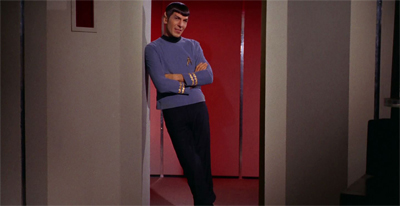
Leonard Nimoy only gets to smile once a year, so the show makes the most of it…
However, there are more fundamental and underlying similarities between Return to Tomorrow and By Any Other Name . Both are episodes that are very much engaged with the underlying philosophy of the franchise, particularly concerning humanity’s place in the universe. Indeed, there’s an argument to be made that Return to Tomorrow and By Any Other Name both work much better as statements of philosophical intent than they do as stories in their own right.
Co-written by Gene Roddenberry, Return to Tomorrow is a rather generic piece of television, but one that feels like a considered statement of the franchise’s central themes.

“Things are going to be a little different around here…”
The biggest problem with Return to Tomorrow is the pacing. The episode is almost halfway to the end before the actual plot of the episode kicks in – before Sargon, Thalassa and Henoch have “borrowed” their human bodies. As with the capture-and-escape sequences at the start of By Any Other Name , the exposition sequences that open Return to Tomorrow slow down and hamper the plot significantly. There’s a sense that Return to Tomorrow takes far too long to get going.
While the first half feels over-extended, the second half feels a little rushed. Henoch turns evil too quickly, while Thalassa flip-flops on whether she wants to keep the body, and Sargon appears to be killed off before we really get a chance to know him. And then there’s the rushed last act, where Return to Tomorrow desperately tries to wring drama from its set up, but nothing has any room to breath, leaving a rather unsatisfying conclusion.

“Jim’s dead, Jim…”
The final few minutes of Return to Tomorrow hinge on the fact that Kirk and McCoy think that they have to murder Spock in order to stop Henoch. It’s one of those great dramatic hooks – would you kill your best friend to save the universe? – but the scripts bungles it because there’s no room to explore the implications of this decision. The entire plot point plays out over about three minutes of screen time.
Most obviously, Kirk and McCoy settle on the fact that they have to kill Spock in four lines of dialogue in the scene right before they attempt to do it. “Jim, the receptacles!” McCoy protests. “Spock’s consciousness was in one of them!” Kirk replies, “It was necessary.” McCoy demands, “What are you talking about? There is no Spock to return to his body. You’ve killed a loyal officer, your best friend.” Kirk is all business. “Bones, prepare a hypo. The fastest, deadliest poison to Vulcans. Spock’s consciousness is gone. We must kill his body, the thing in it.”

“Let’s get the ball rolling, shall we?”
That’s not a plot thread or a character arc. It’s barely even a conversation. It is two actors trying to invest some emotional charge in exposition. It is a bullet-point summary of the climax of Return to Tomorrow , one that explains to the audience what is happening, but doesn’t have any real room to explore the implications of this plot development. This is to say nothing of the actual ending, where it is revealed that Sargon simply tricked McCoy into thinking he’d poisoned Spock when he had just tranquilised him, in order to trick Henoch into leaving Spock’s body.
It’s a gloriously convoluted final act, one that might have worked a bit better if Return to Tomorrow had managed to get through the first half of the story a little quicker – leaving a bit more room for the drama in the second half of the story. As it stands, Return to Tomorrow is a mess of an episode, one packed with interesting ideas and hampered by mediocre execution. It is an episode that fades into the background of the second half of the second season.
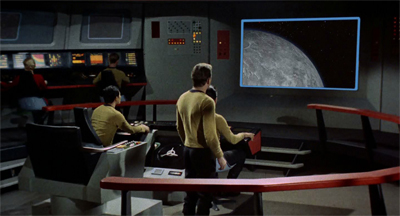
“That’s no moon…”
Even those involved in the production of the episode have acknowledged that Return to Tomorrow is not especially memorable. Diana Muldaur, making her first Star Trek appearance here, has joked that she has never actually watched the episode and can’t remember too much about it :
I actually have a VHS tape of the episode. I don’t have a DVD of it. And I have to look at it. The episode is still bound. It still has the plastic wrap on it. But I do remember an incredible crew. I remember a brilliant costume man. I remember meeting all the people. Shatner was one of the best young actors out of Canada. He wasn’t young by me; he’s older than I, but he was a very good actor who’d done some very wonderful performances in things before Star Trek. All of them were very interesting, very good people. I remember incredible lighting. They could make you incredibly gorgeous in a second.
Although Muldaur is polite and good-natured about the show and her co-stars, she doesn’t seem to remember Return to Tomorrow as vividly as Is There In Truth No Beauty? or her stint on Star Trek: The Next Generation . She does good work here, but it is hard to blame her.
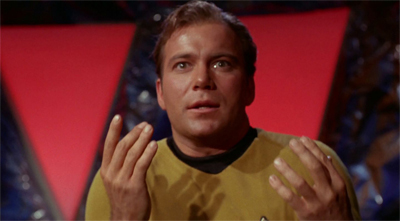
“Sargon lives!”
Muldaur is not alone. Return to Tomorrow is the last episode of the second season directed by Star Trek veteran Ralph Senensky. Senensky has very thoroughly (and entertainingly) documented his experiences working on Star Trek via his wonderful blog, but he conceded that he was quite reluctant to talk about Return to Tomorrow :
Eighteen months ago today I posted the Prolog, my first entry, on this website. In the following weeks, for reasons I explained in that Prolog, I started this cinema journey by writing of my adventures on Star Trek, but I only covered six of the seven treks I had made. I omitted Return to Tomorrow with the lame excuse, “Return to Tomorrow, about which the less said the better.”
Senensky did eventually cover his work on Return to Tomorrow , which is well worth a read. However, there is a general sense that the episode is just sort of there in the final stretch of episodes of the second season. It comes at a point where the entire production team is exhausted, and after a major change in ownership with all sorts of resultant pressure and constraints.
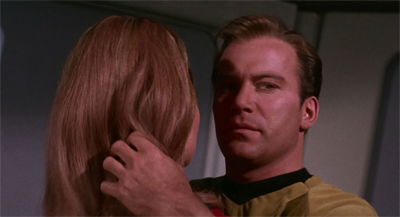
“Well, this is a sexual harassment case waiting to happen…”
Senensky has talked about the production constraints facing those working on Star Trek after the change in ownership . Leonard Nimoy offers another example in his interview with The Archive of American Television . Asked what was important for a Star Trek director, Nimoy explained:
Get it done fast. How to get it done fast. It was constantly schedule, schedule, schedule. You had to try to get something interesting happening within the time and money allotted, but schedule was primary. You had to get it done on schedule. In fact, it got so bad second/third season that at 6:30pm, if a person was working on the show – if a crew member was on the stage – they were on over time. It got so tight that it was absolutely not allowed. And the plan was that at 6:18pm, you quit work, which gave the staff twelve minutes to put away their stuff for the next morning and get off the lot. Either or. I remember, we’d be in the middle of a scene at 6:18pm, and a voice would yell, “That’s a wrap!” And the lights would go out. And you were through.
Senensky’s version of events is slightly different – he suggests the lights went out at twelve minutes past six, leaving eighteen minutes for tidying up. Nevertheless, it gives a sense of the kind of pressure under which Star Trek was working.
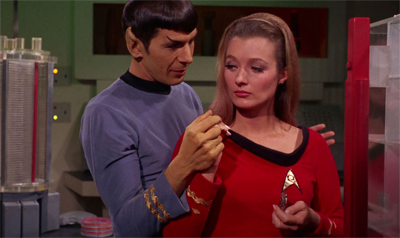
“We could be immortal. We could even appear on The Next Generation, albeit separately…”
And yet, despite the fact that the actual plotting and storytelling of Return to Tomorrow is bland and generic, there is a sense that is an episode that is fundamentally about Star Trek. It is an enunciation of some of the franchise’s core themes. Return to Tomorrow is an episode about exploration, in multiple senses. The most obvious is the literal sense. We are told that the Enterprise is “hundreds of light years past where any Earth ship has ever explored” and that it will take Kirk’s logs “over three weeks” to reach Starfleet “at this distance.”
More than that, it is an episode about exploring in a figurative and philosophical sense. Sargon tempts Kirk down to the planet with something of a grave threat. “And I am as dead as my planet. Does that frighten you, James Kirk? For if it does, if you let what is left of me perish, then all of you, my children, all of mankind must perish, too.” It’s a nice sting for the end of the teaser, even if the show makes it clear quite quickly that Sargon is not a villain. He seems to be talking in the abstract – as if humanity’s worth is measured in its curiosity and spirit of adventure.
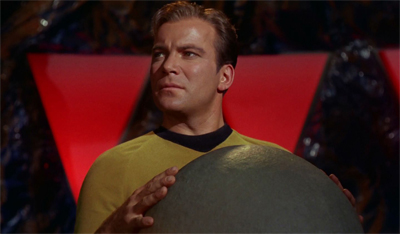
Kirk’s willing to play ball…
After all, Return to Tomorrow features Kirk’s famous “risk is our business” speech about the value of exploration and adventuring. It’s a key (and popular) part of the franchise’s outlook and philosophy , an optimistic and impassioned way of looking at the universe:
They used to say if man could fly, he’d have wings. But he did fly. He discovered he had to. Do you wish that the first Apollo mission hadn’t reached the moon, or that we hadn’t gone on to Mars and then to the nearest star? That’s like saying you wish that you still operated with scalpels and sewed your patients up with catgut like your great-great-great-great-grandfather used to. I’m in command. I could order this. But I’m not because, Doctor McCoy is right in pointing out the enormous danger potential in any contact with life and intelligence as fantastically advanced as this. But I must point out that the possibilities, the potential for knowledge and advancement is equally great. Risk. Risk is our business. That’s what the starship is all about. That’s why we’re aboard her.
It’s a beautiful moment, delivered well by Shatner and framed wonderfully by Senensky, with the camera slowly tightening on Kirk’s face as he explains just what he perceives to be the Enterprise’s core mission.
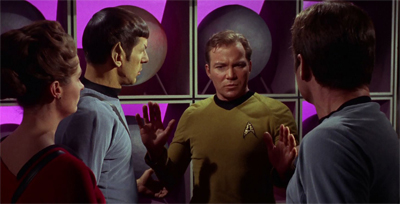
“Yes, I’m sure having our two most senior officers controlled by god-like aliens we just met is a good idea… why wouldn’t it be?”
It fulfills the plot-necessary function of explaining why Kirk would give over his body to a random alien – even if it would still seem safer to nominate two less senior officers – but it also very clearly articulates some ideas at the heart of the franchise. The script for Return to Tomorrow was heavily re-written by Gene Roddenberry, and it feels like something of a prelude for Roddenberry’s more evangelical approach to writing Star Trek from Star Trek: The Motion Picture onwards.
Much like By Any Other Name , Return to Tomorrow is predicated on the idea that humans are inherently and irreducibly special. As with By Any Other Name , a bunch aliens forced to take human form as part of a larger plan find themselves enamored with the pleasures of the human experience. “Lungs filled with air again,” Sargon! Kirk proclaims. “To see again. Heart pumping, arteries surging with blood again. A half a million years. To be again. Your captain has an excellent body, Doctor McCoy. I compliment you both on the condition in which you maintained it.”
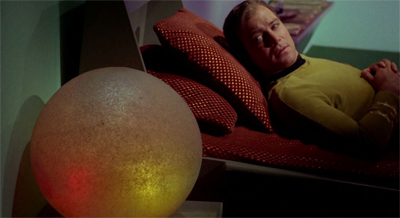
“One is a twenty-third century starship captain. The other is a god-like consciousness trapped inside a glowing ball. Together, they fight crime…” Goodness, I’d love a Kirk/Sargon buddy comedy…
The episode is not credited to Roddenberry, but to John Kingsbridge. Kingsbridge was a pseudonym of writer John T. Dugan, who had been forced to fight Roddenberry for credit. The matter went to the Writers’ Guild of America for arbitration, and they decided in Dugan’s favour. ( Alan Dean Foster had to fight Roddenberry for credit on The Motion Picture .) However, Dugan took exception to some of the creative decisions made during the re-writes, and asked that the finished episode by credited to “John Kingsbridge.”
However, the writing credit on Return to Tomorrow would become a matter of no small controversy. The credits for the episode would become confused and mixed up for the next few decades. James Blish’s prose adaptations of the Star Trek episodes would credit Dugan under his real name. The VHS cover of the Return to Tomorrow cassette credited Gene Roddenberry. Dugan took the matter up with Paramount, earning a settlement and corrections across all associated media.
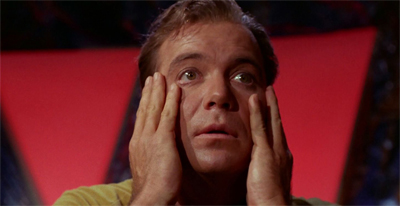
“A god am I…”
Much like Roddenberry’s attempts to strong-arm Harlan Ellison, this is not one of the show’s prouder moments when it comes to dealing with writers. Dugan voiced his frustrations in an interview with Starlog :
“I mean, to be an original Star Trek writer is quite a thing. Then, to have your credit stolen by the god of Star Trek is a cheap shot. I put the tape in and saw that the credit is fine on the show itself, but what pissed me off was that it’s not correct on the jacket, for anyone casually looking at it.”
Roddenberry had heavily re-written episodes like Shore Leave without seeking to “jump” credit, but perhaps he felt Dugan was an easier target because he was not as established a science-fiction writer as Theodore Sturgeon.
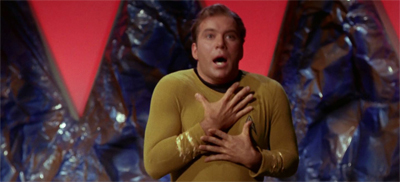
“Oh my, it looks like Sargon’s just come into possession of William Shatner’s acting powers…”
The disagreement between Dugan and Roddenberry of the script concerned the final act. At the end of Return to Tomorrow , Sargon and Thalissa decide to drift off into “oblivion” together, abandoning the universe to mankind and other similar species. According to the aforementioned Starlog interview, Dugan objected on philosophical grounds to this ending:
“That line totally went against my philosophy and cosmology,” he says. “It was only one line, but I didn’t want to be associated with it. This oblivion idea is Roddenberry’s philosophy, not mine. My philosophy was that these entities would exist as spirits for eternity, but they wouldn’t have their bodies. That might be a small thing, but I have a reputation and a philosophy, and everybody who knows me knows what I stand for; I certainly don’t stand for oblivion in the afterlife, so I used my pseudonym. When you write a script, you don’t expect to have your world view changed by a producer. The rest of Roddenberry’s changes were all trivial, as I said in my letter to the arbiters; the big thing was that change in the episode’s philosophy. Other people might think I’m crazy, but that’s the way I live.”
However, as much as Dugan’s central cosmology and philosophy would reject the idea of Sargon and Thalissa fading away into nothingness, Roddenberry’s central cosmology and philosophy all but demanded it.
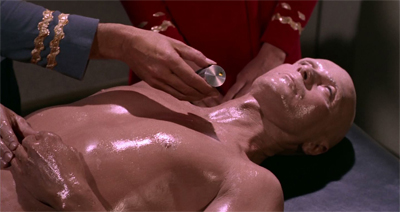
An impressive body of work…
At its core, Return to Tomorrow is a story about how the universe does not need its gods any more. It is a tale about how mankind has moved beyond the need for an all-powerful father-figure to tell them what to do and what not to do. This is as much a story about Gene Roddenberry’s atheism as The Apple or most of Who Mourns for Adonais? (Which, of course, sets it at odds with the conclusion to Bread and Circuses .)
Sargon and his people are cast in a very religious light. It is no wonder that Henoch, the evil character, ends up in the most satanic body. Sargon confesses to Kirk, “One day our minds became so powerful, we dared think of ourselves as gods.” It seems that Sargon hasn’t ever moved past that. He refers to Kirk as “my son” and to humanity as “my children.” He describes space as “the heavens.” He speaks in a disembodied voice with absolute power.

Spock hated to burst Henoch’s bubble…
Return to Tomorrow draws rather heavily from The Book of Genesis , with Sargon even doing some biblical name-dropping. He takes credit for creating life on Earth… maybe. “As you now leave your own seed on distant planets, so we left our seed behind us,” he boasts. “Perhaps your own legends of an Adam and an Eve were two of our travellers.” When Mulhall questions his suggestion, Spock suggests Sargon’s people may have “seeded” Vulcan. Sargon promptly changes the subject. “In either case, I do not know. It was so long ago.” It’s hard to keep track.
This isn’t the only parallel. The climax of the episode owes a debt to Abraham’s sacrifice of Isaac, when God directs the man to sacrifice his only son. However, it is revealed to be a test of faith at the last possible moment, with God sparing Isaac. At the end of Return to Tomorrow , Sargon asks Kirk to sacrifice Spock. Kirk does so willingly, only for Sargon to spare Spock at the last minute. “I could not allow your sacrifice of one so close to you.”
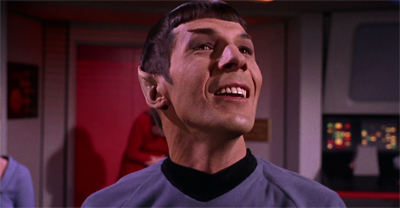
Taking the opportunity to chew the scenery is only logical…
Return to Tomorrow makes several references to the theory of “ancient astronauts” – the idea that Earth was visited by pre-historic space explorers who either created or curated life on the planet. Sargon seems to suggest that his people created mankind specifically so that Kirk would find this planet all these years later. “We knew the seed that we had planted on other planets would take root, that one day you would build vessels as we did, and one day you would come here,” Sargon! Kirk boasts.
The Star Trek franchise is quite fond of the idea of ancient astronauts – the idea of aliens who have shepherded evolution across the cosmos, possibly including Earth. The Preservers fulfil a similar function in The Paradise Syndrome , while Who Mourns for Adonais? , Requiem for Methuselah and Plato’s Stepchildren hit on similar ideas. On The Next Generation , The Chase reveals that all the alien races on Star Trek look so alike because they were all seeded by the same race.
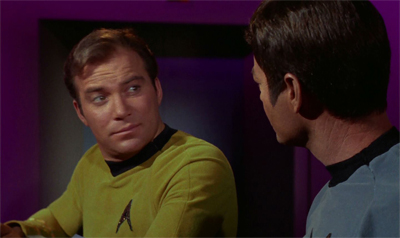
“Yes, Bones, purple alert is now totally a thing…”
It is worth noting that Roddenberry himself firmly rejected the idea of ancient astronauts, interpreting the idea as an insult to humanity’s own power of self-determination and autonomy . Mankind was perfectly capable of building the pyramids on their own terms, without any assistance from extraterrestrials. It is a powerful statement of Roddenberry’s atheist humanism, and one that informs a lot of what of the writer saw in Star Trek .
So the franchise’s fixation on the concept is interesting, because it runs so contrary to Roddenberry’s worldview, and that of the entire franchise. Then again, Star Trek has never been entirely internally consistent, especially on matters of faith. However, there are a number of possible reasons why the franchise may have returned so frequently to this subject. Most obviously, because the concept of ancient astronauts allowed the franchise to engage with religion in an indirect way.
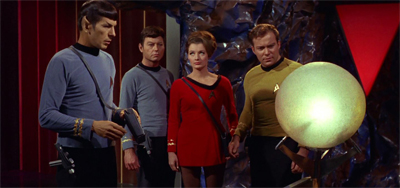
Enlightenment…
After all, religion is a pretty controversial subject. Actually questioning and exploring Christianity would have been impossible in the late sixties on American network television. However, as Ryan Britt has noted , creating aliens who satisfy many of the expectations of deities gets around a potentially thorny issue:
The idea that aliens could be our ancestors (instead of gods or supernatural deities) opens up new avenues of faith for skeptics with a science-based worldview. Instead of being made from mud, or springing from the head of Zeus, we can look up to the stars and say, “well, it probably was on one of those things, where everything else came from.”
It’s not wonder that the idea is as old and archetypal as it is, with Chariots of the Gods? tracing a rich line of speculative fiction dating back through Dawn of the Magicians to H.P. Lovecraft and beyond.

Let Sargons be bygones…
On the twelfth anniversary of Gene Roddenberry’s passing, James F. McGrath reflected on how Star Trek used these sorts of pulpy science-fiction ideas :
It is interesting that so many stories on Star Trek and other science fiction shows explore the scenario that advanced aliens are mistaken for gods and advanced technology for magic or miracle. It allows the exploration of longstanding traditions of storytelling to continue in the framework of our modern scientific worldview. But it also allows the gods to be challenged, rejected, taken on, beaten, and brought down to size. And so if, on one level, doing that posits that such beings as Apollo really exist, on another it allows human beings to outgrow them and treat them as beings like us, and not infallible sources of truth worthy of worship.
With all this in mind, Gene Roddenberry’s script for Return to Tomorrow could only have ended one way.

Kirk can handle this situation…
Sargon and Thalissa’s decision to retreat into “oblivion” implies that they are handing over the universe to their successors. It is a way of making explicit the ideas implied by the early first season and late second season episodes that portrayed the universe as a mostly-empty graveyard haunted by the ghosts of once-powerful civilisations. Humanity has inherited the universe; this is their opportunity to define themselves against it.
That said, it wouldn’t be a Gene Roddenberry script if there weren’t a few moments when Return to Tomorrow gets a little heavy-handed with its morals. Explaining how he and his people ended up in their protective bubbles, Sargon recalls “the cataclysm which [they] loosened upon [themselves]” , “a struggle for such goals and the unleashing of such power that you could not comprehend.” Kirk makes the immediate implied connection with the atomic age. “We faced a similar crisis in our early nuclear age. We found the wisdom not to destroy ourselves.”
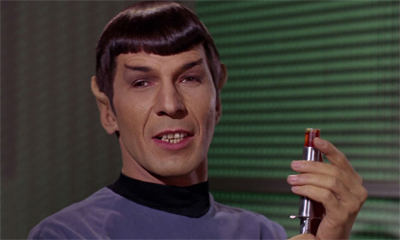
“… And that’s why, when I’m trying to maintain a mortal body, I use Doctor McCoy’s patented Homebrew Immortality Serum. Available from all good deep space outlets.”
To be fair to Roddenberry, Sargon does suggest that atomic horror is not the only potential calamity awaiting a rapidly-advancing society. “We survived our primitive nuclear era, my son,” Sargon tells Kirk. “But there comes to all races an ultimate crisis which you have yet to face.” That ultimate crisis is existential and philosophical in nature – much like Sargon’s threat to Kirk at the end of the teaser. Sargon’s society was destroyed by its own arrogance and hubris, having survived its atomic age.
It is a little weird to hear that line in the wake of Roddenberry’s writing on The Motion Picture and The Next Generation , where it frequently seemed like mankind had elevated themselves to the status of the divine – deciding when and when not to intervene, taking great pride in lording their superiority over those they deemed less advanced. It seems like episodes like The Last Outpost and Lonely Among Usfthe gam might have learned from Sargon’s wisdom.
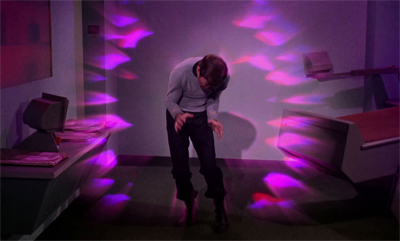
“See, Bones, THIS is why we have purple alert!”
There’s also some of the troubling background radiation sexism we’ve come to expect from Star Trek . To be fair, Mulhall is a much more developed and competent female guest star than usually appears – Diana Muldaur holds her own quite well against the rest of the ensemble, giving Mulhall some of the same bite that she would bring to Pulaski on The Next Generation . However, it’s telling that – much like Kelinda in By Any Other Name – Thalassa is the alien most skilfully and casually manipulated.
It is Thalassa who is corrupted (albeit briefly) by Henoch’s promise of immortality. Henoch and Sargon are defined as moral absolutes. Sargon is never tempted to abuse his power, while Henoch starts plotting to hang on to his new body almost the moment he wakes up. Thalassa, on the other hand, seems prone to change her mind depending on whom she spoke to last. Even when they decide to keep their bodies, Henoch schemes in the background until his plan is complete, while Thalassa lashes out at Doctor McCoy in a rather transparent and petulant manner.

Strange new world…
Still, there is something quite pointed in Thalassa’s plea to keep Mulhall’s body. After all, the audience knows that Kirk has to be Kirk and Spock has to be Spock by the end of Return to Tomorrow . Mulhall is a guest star, and so she is disposable; she is even wearing a red uniform. Thalassa tries to bargain with McCoy. “It happens to belong to a young woman,” McCoy insists. Mulhall cuts across him, “Who you hardly know. Almost a stranger to you.”
There’s something quite pointed in that remark. It almost seems like Thalassa is drawing attention to how casual and callous Star Trek can be about lives outside those of the primary cast. Mulhall has never been seen before, she has never been seen again. How is she different from the dozens of Enterprise crew members who appear in episodes like this so that they may be killed off to provide cheap drama. Is Mulhall any more or less important than Yeoman Thompson, forgotten at the end of By Any Other Name ?
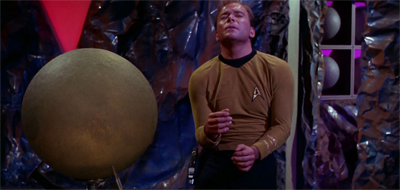
“Sargon, you will discover that mankind has pioneered many revolutionary dance moves since your last visit…”
Return to Tomorrow never answers that challenge. Mulhall never appears again, despite Muldaur’s performance and the appeal of a no-nonsense hyper-competent female staff member other than the still-nebulously-defined Uhura. However, the fact that the episode dares to raise the question is interesting. It might be too much to describe Return to Tomorrow as self-aware, but there are faint glimmers to be found buried in the messy script.
The production on Return to Tomorrow is quite impressive. The design of Sargon is very cost-effective, but it is also iconic. The idea of an entire civilisation preserved in simple white spheres is incredibly memorable – the design recalls the “head museum” in Futurama , and it seems unlikely to be a coincidence. Like the Gamesters from The Gamesters of Triskelion , Sargon is the kind of eccentric realised-on-a-tiny-budget alien that people think about when they think of Star Trek .
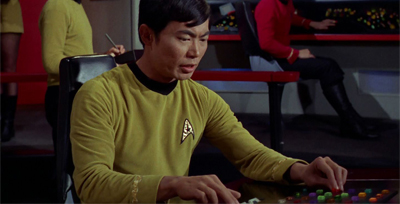
Welcome back, Sulu…
It’s also nice to have George Takei back, after his ten-episode absence from the middle of the season. Takei was filming The Green Berets , a production that ran significantly over-schedule. Takei regrets that unfortunate scheduling mismatch, because the second season had promised a larger role for Sulu :
During the first season I lobbied Gene Roddenberry and the directors and the writing staff to beef up the role — well, everybody was doing that, and when you have seven regulars it gets to be very difficult. Gene said, “This is the first season and we really have to strengthen the two leads.” But he promised me that in the second season he’d devote more attention to the other characters. He did keep his promise and develop wonderful roles for Sulu. But I got cast during the hiatus in The Green Berets, the John Wayne movie. We ran way over schedule and I couldn’t be back in time for the beginning of the second season. Walter Koenig was brought in to essentially say the words that were written for me. I had already memorized them because I was so excited.
Perhaps the most notable example of Chekov stepping into a Sulu-sized gap is The Trouble With Tribbles . Sulu doesn’t do anything particularly noteworthy or important over the course of Return to Tomorrow , but the show opens on a nice a close-up of George Takei to assure viewers that the character has returned.
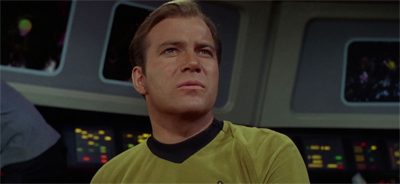
“Let’s see what’s out there…”
Return to Tomorrow is also notable for allowing Leonard Nimoy a chance to step outside the role of Spock, if only for twenty minutes. Nimoy relishes the opportunity to play a more manipulative and scenery-chewing role than that of the half-Vulcan first officer, accepting that Henoch is never going to be a multi-faceted antagonist for the show. There is something strangely charming about seeing Nimoy grin and smirk and plot in his familiar Spock make-up.
By Any Other Name and Return to Tomorrow may not feature the best writing on the show, but they are packed with visuals and ideas deeply associated with Star Trek .
You might be interested in our other reviews from the second season of the classic Star Trek :
- Supplemental: (Gold Key) #1 – The Planet of No Return!
- Supplemental: (Marvel Comics, 1980) #4-5 – The Haunting of Thallus!/The Haunting of the Enterprise!
- Metamorphosis
- Friday’s Child
- Who Mourns for Adonais?
- Supplemental: Spock’s World by Diane Duane
- Supplemental: New Visions #3 – Cry Vengeance
- Wolf in the Fold
- The Changeling
- Supplemental: (DC Comics, 1984) #43-45 – The Return of the Serpent!
- Supplemental: (IDW, 2009) #13 – The Red Shirt’s Tale
- Supplemental: Deep Space Nine – Crossover
- Supplemental: New Visions #1 – The Mirror, Cracked
- Supplemental: (DC Comics, 1984) #9-16 – New Frontiers (The Mirror Universe Saga)
- Supplemental: Mirror Images
- Supplemental: Mirror Universe – The Sorrows of Empire by David Mack
- Supplemental: (IDW, 2009) #15-16 – Mirrored
- The Deadly Years
- Supplemental: (Gold Key) #61 – Operation Con Game
- Supplemental: (DC Comics, 1984) #39-40 – The Return of Mudd
- Supplemental: The Galactic Whirlpool by David Gerrold
- Supplemental: Alien Spotlight – Tribbles
- Bread and Circuses
- Journey to Babel
- A Private Little War
- The Gamesters of Triskelion
- The Immunity Syndrome
- A Piece of the Action
- By Any Other Name
- Return to Tomorrow
- Patterns of Force
- The Ultimate Computer
- The Omega Glory
- Supplemental: Assignment: Eternity by Greg Cox
- Supplemental: (DC Comics, 1989) #49-50 – The Peacekeepers
- Supplemental: (IDW, 2008) Assignment: Earth
Share this:
Filed under: The Original Series | Tagged: ancient astronauts , androids , chariots of the gods , credit , credit jumping , Diana Muldaur , Federation , gene roddenberry , James Doohan , john kingsbridge , john t. dugan , religion , return to tomorrow , risk is our business , sargon , sargon's people , star trek , star trek: the original series , the original series , themes , tos , writing |
2 Responses
I love this blog. You go deeper into these Star Trek episodes than, perhaps, the writers and producers. It will take me months to digest all of your ideas.
I remember watching this episode immediately after deciding not to undergo hip replacement surgery. The heads of my femurs were made of dead bone and were crumbling.
I emphasized with Henoch and Thalassa. What is life if I can’t feel? Could I live a life of near-eternity inside of an unfeeling android body? I could at least think, couldn’t I? But what would it be like to think without feeling? What could anchor my thoughts?
So I lived with the pain for awhile, but it got worse, and I was unable to think at all because “feeling” became such a dominant sensation. I gave up and eventually did get my hip replacement surgery. I can still feel. I am still human.
Anyway…. thanks again for this blog.
Thanks for the kind words John.
And thank you for sharing your story. I have had several relatives go through joint replacement surgery, and while they described the process (and subsequent rehab) as incredibly tough, none of them regret the decision.
Leave a comment Cancel reply
This site uses Akismet to reduce spam. Learn how your comment data is processed .
Recent Posts
- 373. Pirates of the Caribbean: The Curse of the Black Pearl (#225)
- 371. Poor Things (#246)
- 370. Dune: Part Two (#12)
- 369. Memento (#57)
- 368. Monty Python and the Holy Grail (#154)
Recently tweeted…
- "I Simply Am Not There": The Existential Horror of Eighties Excess in "American Psycho"...
- Star Trek: Deep Space Nine (Reviews)
- "The Things You Gotta Remember Are the Details": Reservoir Dogs and the Fragility of Memory and Meaning in the Nineties...
- "They Are Touching Things!" The Aviator, and the Yearning for Human Contact...
Available at…

Blogs Well Worth Your Time
- 1001 Must See Films
- Andrew at the Movies
- Anomalous Material
- Cut the Crap Movie Reviews
- Encore Entertainment
- Fandango Groovers
- FlixChatter
- Four of Them
- It Rains… You get Wet…
- Jameson Cult Film Blog
- Jar Watches Films
- Let's Go To The Movies
- M. Carter at the Movies
- Marshall and the Movies
- Movie News First
- Musings from a Man Lost in La Mancha
- Never Mind Pop Film
- Paragraph Film Reviews
- Roger Ebert's Journal
- Ross v. Ross
- Scannain.com
- Screenwriter (Donald Clarke, Irish Times)
- Strange Culture
- The Film Cynics
- The Pompous Film Snob
- The Projection Booth
- Things That Don't Suck
- Too Busy Thinking About My Comics
- Undy a Hundy
Film Nerd Resources
- CinemaBlend (News)
- Internet Movie Database
- Rope of Silicon
- The Guardian Film Blog
- James Berardinelli
- Roger Ebert
Email Subscription
Enter your email address to follow this blog and receive notifications of new posts by email.
Email Address:
Sign me up!
Blog at WordPress.com. WP Designer.
- Already have a WordPress.com account? Log in now.
- Subscribe Subscribed
- Copy shortlink
- Report this content
- View post in Reader
- Manage subscriptions
- Collapse this bar
Star Trek : "A Private Little War" / "Return To Tomorrow"
A more political minded fella than myself could make some good hay out of the premise of the first part of this week's double feature. "A Private Little War" has Kirk revisiting a pastoral society and finding that things have changed considerably since his last trip; they've gotten more violent. The question becomes, what responsibility does he have to the people he left behind, and how far should he go to fix things? Civilizations don't develop at the same rate, and it's human nature to want to interfere with your neighbor, especially when that neighbor lives in cave and still thinks sticks and stones are a really good idea. But it's impossible to see to the end of things, and no matter how good your intentions are, there's no telling what a couple of guns and some helpful physics lesson might lead to.
Related Content
The "non-interference directive" has come up on the series before, but "War" is the most serious we've gotten on the subject. It's a surprisingly ambiguous take on the issue, too; impossible to say for sure how much of that ambiguity was intentional, but I left "War" with a bad taste in my mouth, for all the right reasons. (Wow, there are a lot of really horrible jokes I could make right here, aren't there.) Things start off with a bang. In the first ten minutes, Kirk learns that the peaceful locals have gone from bows and arrows to flintlock rifles, he and Spock break up an ambush, Spock gets shot, they beam back up to the Enterprise where Spock's life is in danger, and there's evidence that there's a Klingon ship in the area. That's all before the opening credits. After the credits, Kirk and McCoy beam back down to the planet so Kirk can make contact with Tyree, Kirk's old friend back from his first trip to the planet. Kirk gets attacked by a local beastie called a mugato , which is actually pretty effectively weird, at least by TOS standards; a guy in a white gorilla suit with spines sticking out the back and a horn on his head. It's goofy, but it's plausibly goofy, if you follow. The thing manages to take Kirk down and poisons him with it's talons before McCoy zaps it with a phaser. Oh, about the phaser use; Spock goes to great pains to keep Kirk from firing his phaser while he's on the planet. Non-interference means blending in (which doesn't explain why they're wearing regular Starfleet uniforms; I doubt the original plan was to meet Tyree, but why risk being seen?), and that means that using highly advanced weapons in front of the natives is a no-no. One of the nice things about the episode is that, without anybody making a big deal of it, Spock's concern is proven well-founded. McCoy shows precious few reservations about using his phaser when the need dictates, and while it was almost certainly necessary that he use it on the mugato to save Kirk's life, the fact that later on he heats up a bunch of stones with the damn thing—and that Tyree's power hungry wife, Nona, catches him doing it—is fine proof that rules exist for a reason. With Kirk sick, McCoy has to rely on the friendliness of the natives. Fortunately, he gets picked up by some of Tyree's men; there are two different societies fighting it out (hill people, with white hair and bows and arrows, and the village people, with dark hair and guns), and McCoy ends up with the "good guys." Tyree's fallen in love in the years since he last saw Kirk, or at least lust—his wife Nona is a witch woman who uses herbs to bind Tyree to her. The skin tight pants and puffy orange bra probably don't hurt either. (I guess there are wild Muppets in the area, 'cause at least a few of them died to make that top.) Plus, she's got make-up and a fake-looking tan. No red fingernails or ankle bracelet, but maybe she's still finding her way. Nona heals Kirk of the mugato 's poison, with some hoo-doo that supposedly binds him to her. "War" has some dark questions, but it doesn't stint on the overheated melodrama—a spoonful of sugar and all that jazz—and Nona's "treatment" is hilarious. As is Nona in general. Although the campiness is definitely entertaining, she's probably the episode's weakest element; she's basically Evil Power Hungry Temptress 1a, and we never get any reason for her to be so desperate beyond that whole "powerful women are evil!" thing. Really, though, the episode is about Kirk and McCoy trying to decide how to handle the situation. Once Kirk is back on his feet, he and McCoy check out a nearby village to have their suspicions confirmed; the Klingons have been supplying the townsfolk with guns. (It's interesting that they've been doing this in such a surreptitious fashion; the natives probably would've developed guns on their own eventually, and the Klingons go to great pains to ensure that the flintlock rifles they provide at least look like they could be home grown. Is the "non-interference directive" a universal treaty?) Now that the natives are all trigger happy, there's no way to put things back the way they were, so Kirk is faced with a dillemma. Does he let the townsfolk take over because of their advantage in arms, or does he make some guns of his own? It's not that difficult a choice for Kirk. He makes up his mind without us or McCoy being in on the process; it's guns, guns, guns all around. When he states his case to McCoy, it's hard to argue with him; he's using the "balance of power" justification that led to nuclear proliferation for the second half of last century, and while it's a dangerous road, it's not an easy one to step off of. The Klingons have given Kirk enough wiggle room to lend aid to his friends, and he's going to take advantage of that as much as he can. What's great is that this is never presented as an unequivocal good. The Klingon that Kirk and McCoy fight with never gets shot, there's never any feeling of heroism when hill people start to fight back. It seems more like an impossible situation that gets an unpleasant solution, and whether or not you agree with it, I think the episode presents its point fairly. The one hold-out of the hill people to Kirk's plan is Tyree, who refuses to kill. That gets complicated when he catches Kirk making time with Nona. After Nona saw McCoy using the phaser, she decided she wants herself a piece of that; so with her "magic," she seduces Kirk to try and bend him to her will. Tyree sees them making out, and nearly shoots Kirk, but he changes his mind and drops his gun, leaving just before a mugato (probably the mate of one McCoy killed earlier) jumps out. Kirk's in too weakened a state to defend himself and Nona, well, she's a girl, so what're you gonna do. Kirk eventually busts out his own phaser and kills the beast; in lieu of thanks, Nona knocks Kirk unconscious, steals his gun, and makes her way to meet the village folks, determined to find someone who'll be willing to put her new toy to good use. There follows some unpleasantness, as the town people don't really appreciate Nona's offer, and she can't seem to figure out the phaser well enough to hold them back. Tyree and the others catch up in time to see Nona get killed, and Tyree wigs out. There's fighting, the villagers are either killed or run off, and Tyree has made up his mind; he wants guns and he wants vengeance, in that order. Kirk's finally got his wish, but nobody seems too pleased about it. Ordering up the flintlocks from the Enterprise, Kirk asks for "100 serpents… for the Garden of Eden." The line is a little too on the nose, but it's hard to disagree with the sentiment. "War"'s all about what happens when advanced civilizations decide to muck around with cavemen; and "Return To Tomorrow" is actually about the same thing, only this time, it's the Enterprise that's living on rocks and shadows, and an alien race that far outpaces them. In a way, we're dealing with another race of god-beings, but for once, they aren't here torment Kirk and the rest. This time they actually need help, and it's not because they're bored. They're stuck in these orbs, see, and they're all energy, no life. The wisdom of the ages, but if they want to get anything done, they'll need to get a little physical, and to do that they need bodies. And y'know, Kirk has one of those. So does Spock. So does this week's crew-woman guest star, Ann Mulhall, played by Diana Muldaur. Muldaur is best known to Trekkies as Dr. Pulaski, from the second season of Star Trek: The Next Generation ; her character there was controversial, to say the least (speaking for myself, she was more annoying that Tasha Yar), but she does a fine job here. She isn't given a whole lot to work with, to be sure, but at least she doesn't spend her time bitching Spock out for being emotionless or something. The Enterprise is moving through unexplored space when they get a hail from a dead planet; the hail becomes a sonorous voice that must be pretty lonely, because he's asking for some company. And he's incredibly powerful, so it might not be a good idea to refuse his request. Communication with Starfleet is on a three week delay, so Kirk is on his own. He tries to play it safe, telling Spock to stay behind on the ship while he and the others beam down, but the power goes out, and Kirk gets the message; Spock is invited. Mulhall receives a similar summons to the transporter room. (Odd that the voice, who calls himself Sargon, resorted to indirect communication when he clearly doesn't have any problem explaining himself in words.) Inside the planet, our heroes find a orb that blinks light. Sargon's consciousness exists inside that orb, and when he asks Kirk to come closer, that consciousness jumps into Kirk's body. And oh lord, how the Shatning does commence. In general, "Tomorrow" is a solid morality play with sci-fi (SyFy?) trappings; but for that brief moment when Kirk is first possessed, it's something else entirely. I mean, he actually feels himself up. The idea that anybody on set could see that number and not bust a gut laughing is beyond me. Sargon's invasion naturally puts everybody on the edge, but it seems like his intentions are pure. He's just borrowing Kirk, not buying, and the only real damage he does is ramping up Kirk's metabolism to dangerous levels. Once McCoy's calmed down, Sargon lays out the deal: his race died out thousands of years ago, after being so incredibly powerful that they could do just about anything. (He keeps calling everybody "my child," and there's some speculation that his people might've got the Vulcan race going.) But there were some problems, you know how it goes, and the planet's atmosphere got a little, what's the word for it, destroyed. Now the only three beings left of Sargon's people are Sargon himself, his wife Thalassa, and a dude named Henoch. They've been waiting in these giant ping-pong balls for ages, just for some conscious life to come close enough to contact, and now that Sargon has made new friends, he needs to ask a favor. If he and his two companions can borrow Kirk, Spock, and Mulhall's bodies, they can build humanoid robots to house their energy in. Much like "War," there's as much time spent talking about what needs to be done as there is actually doing it, and I count that as a point in both episodes' favor. In "War," there was a terrific discussion on the bridge about the relative speeds of a society's development, plus the arguments between Kirk and McCoy on the planet; here, we get Kirk pushing to let Sargon have his way, while McCoy and Scotty express their serious reservations. In all cases, nobody seems over-matched or foolish. Kirk wins out, but he has to work for it, and I love his final argument—that it's important to take a risk and trust Sargon, because of the incredible opportunities an advanced race like Sargon's can provide. Sure, there's something odd about Sargon wanting the Enterprise 's captain and its first officer; this isn't intentional plotting on Sargon's part (he, at least, is worth of Kirk's trust), but the simple mechanics of putting a ship's two highest ranking personnel out of commission for an unknown length of time seem prohibitive. But while I don't think Kirk's enthusiasm is exactly practical, I appreciate that he needs to get his way for the good of the episode, and I enjoy how he justifies himself. What follows is an entertaining mini-tragedy; of the three invading presences, Henoch (who takes over Spock's body) proves himself most untrustworthy, driven half-mad after all his time imprisoned, and really not that keen on leaving such a nifty Vulcan body behind for the confines of circuits and steel. Nimoy gets a chance to ham it up here, and it really pays off. He has a half-smirk on his face most of the time, and he makes a great contrast to the somewhat overplayed nobility of Sargon and Thalassa and their love. Just as interesting is that Henoch's temptations actually start to work on Thalassa; I guess her being a woman and all, she's really keen on sensuality, and wants to get more passionate hugging in her with husband before they go all cybernetic. Things come to a head when Henoch decides he has to kill Sargon to get his way. (Actually, the decision comes pre-made; five minutes after jumping into Spock, he's already messing with the meds that will keep Sargon from overheating Kirk's body.) There's an unconvincing attempt to generate suspense by telling us that Kirk is dead, and then by having Spock poisoned to force Henoch out; the spheres are destroyed; but everything turns out okay, with Henoch destroyed, Kirk and Spock restored, and Thalassa and Sargon happily consigned to mutual oblivion. (She keeps asking "Can we go there together?" I'm not sure she understands what oblivion actually means.) Nobody gets any shiny new tech, but that's probably for the best. Given what we saw in "War," it's a wonder that Kirk is so eager to jump start his race's knowledge. Oh, Starfleet is wonderfully peaceful and perfect, no question; but I'm willing to bet that Sargon's people thought themselves pretty perfect too, and look where they ended up. It doesn't matter that most everybody has the best of intentions. In the end, all it comes down to is that one guy in the back suddenly thinking, "Y'know, it wouldn't be that hard to get away with," and everything gets complicated. For now, at least, it's better that those complications won't destroy any planets. Grades: "A Private Little War": B+ "Return To Tomorrow": B+ Stray Observations:
- The sub-plot in "War" about Spock's health problems is so-so (Spock's self-induced coma was interesting, Chapel's infatuation less so), but it's nice to get anothe African-American profession into the show; this time it's Dr. M'Benga (Booker Bradshaw), an expert on Vulcan biology who we'll never see again. Ah well, at least he gets to slap Nimoy around before he goes.
- There's a great bit in "War" when one of the armed natives says, "I thought my people would get tired of killing," but then admits that they've actually developed a taste for it. Balance of power or not, that's messed up.
- The visual style of "Tomorrow" is really striking. Ralph Senensky has directed episodes we've already covered, but this is the first I remember noticing the difference.
- Next week, Nazis in "Patterns of Force," and presumably non-Nazis in "By Any Other Name."
We will keep fighting for all libraries - stand with us!
Internet Archive Audio

- This Just In
- Grateful Dead
- Old Time Radio
- 78 RPMs and Cylinder Recordings
- Audio Books & Poetry
- Computers, Technology and Science
- Music, Arts & Culture
- News & Public Affairs
- Spirituality & Religion
- Radio News Archive

- Flickr Commons
- Occupy Wall Street Flickr
- NASA Images
- Solar System Collection
- Ames Research Center

- All Software
- Old School Emulation
- MS-DOS Games
- Historical Software
- Classic PC Games
- Software Library
- Kodi Archive and Support File
- Vintage Software
- CD-ROM Software
- CD-ROM Software Library
- Software Sites
- Tucows Software Library
- Shareware CD-ROMs
- Software Capsules Compilation
- CD-ROM Images
- ZX Spectrum
- DOOM Level CD

- Smithsonian Libraries
- FEDLINK (US)
- Lincoln Collection
- American Libraries
- Canadian Libraries
- Universal Library
- Project Gutenberg
- Children's Library
- Biodiversity Heritage Library
- Books by Language
- Additional Collections

- Prelinger Archives
- Democracy Now!
- Occupy Wall Street
- TV NSA Clip Library
- Animation & Cartoons
- Arts & Music
- Computers & Technology
- Cultural & Academic Films
- Ephemeral Films
- Sports Videos
- Videogame Videos
- Youth Media
Search the history of over 866 billion web pages on the Internet.
Mobile Apps
- Wayback Machine (iOS)
- Wayback Machine (Android)
Browser Extensions
Archive-it subscription.
- Explore the Collections
- Build Collections
Save Page Now
Capture a web page as it appears now for use as a trusted citation in the future.
Please enter a valid web address
- Donate Donate icon An illustration of a heart shape
Star Trek: Dr. Polanski of Return to Tomorrow meets Steve McGarett
Video item preview, share or embed this item, flag this item for.
- Graphic Violence
- Explicit Sexual Content
- Hate Speech
- Misinformation/Disinformation
- Marketing/Phishing/Advertising
- Misleading/Inaccurate/Missing Metadata

plus-circle Add Review comment Reviews
Download options, in collections.
Uploaded by JoeyBrooklyn on October 17, 2022
SIMILAR ITEMS (based on metadata)

Star Trek Original Remastered
Return to Tomorrow
Cast & crew.
Majel Barrett
Nurse Christine Chapel
Diana Muldaur
Ann Mulhall
Roger Holloway
Roger Lemli
Eddie Paskey
Information
© 2009 CBS Corp. All Rights Reserved.
Accessibility
Copyright © 2024 Apple Inc. All Rights Reserved.
Internet Service Terms Apple TV & Privacy Cookie Policy Support

IMAGES
VIDEO
COMMENTS
Return to Tomorrow: Directed by Ralph Senensky. With William Shatner, Leonard Nimoy, DeForest Kelley, Diana Muldaur. The Enterprise is guided to a distant, long-dead world where survivors of an extremely ancient race - existing only as disembodied energy - desiring the bodies of Kirk, Spock and astro-biologist Ann Mulhall so that they may live again.
"Return to Tomorrow" is the twentieth episode of the second season of the American science fiction television series Star Trek. Written by John T. Dugan (under the pen-name "John Kingsbridge") and directed by Ralph Senensky, it was first broadcast February 9, 1968.. In the episode, telepathic aliens take control of Captain Kirk, Dr. Ann Mulhall (Diana Muldaur), and First Officer Spock's bodies ...
"Star Trek" Return to Tomorrow (TV Episode 1968) Diana Muldaur as Ann Mulhall, Thalassa. Menu. Movies. Release Calendar Top 250 Movies Most Popular Movies Browse Movies by Genre Top Box Office Showtimes & Tickets Movie News India Movie Spotlight. ... Diana Muldaur: Ann Mulhall, Thalassa. Showing all 13 items Jump to: Photos (8) Quotes (5)
Telepathic aliens take over Kirk and Spock's bodies. The USS Enterprise is traveling through a region of space hundreds of light years farther than any Earth starship has ever explored. A great, ineffable intelligence has activated her distress signal relays, giving her strong readings yet remaining invisible to her sensors. The crew arrive at a destroyed class M planet - much older than ...
Diana Muldaur (born 19 August 1938; age 85) is an actress, best known to Star Trek fans for her portrayal of Doctor Katherine Pulaski during the second season of Star Trek: The Next Generation.She appeared in all but two episodes of the season: "The Outrageous Okona" and "Q Who".Muldaur had previously appeared in two episodes of Star Trek: The Original Series (" Return to Tomorrow" and "Is ...
Diana Muldaur (born August 19, 1938) is an American film and television actress.Muldaur's television roles include Rosalind Shays on L.A. Law and Dr. Katherine Pulaski in the second season of Star Trek: The Next Generation.She also appeared in two episodes of Star Trek: The Original Series in the late 1960s, playing two different roles (Dr. Miranda Jones and Ann Mulhall).
In Star Trek: The Original Series' "Return to Tomorrow," Diana Muldaur's Dr. Ann Mulhall joins Captain Kirk, Spock (Leonard Nimoy), and Dr. Leonard McCoy (DeForest Kelley) as part of an away team ...
Diana Muldaur portrayed Dr. Katherine Pulaski during the second season of Star Trek: The Next Generation, temporarily replacing Gates McFadden's Dr. Beverly Crusher (McFadden was let go at the end of the first season).This was not her first foray into Trek, having appeared on Star Trek: The Original Series as Dr. Ann Mulhall, in the second season episode "Return to Tomorrow," and as Dr ...
In 1968, she appeared in the original Star Trek episodes "Return to Tomorrow" (as Science Officer Dr. Ann Mulhall), and in "Is There in Truth No Beauty?" as Dr. Miranda Jones. In 1988, Muldaur was cast as Dr. Pulaski for the second season of TNG as a replacement for Gates McFadden, the actress who played Beverly Crusher in the first season.
Return to Tomorrow. Stardate 4768.3: Telepathic aliens take over Kirk and Spock's bodies. Answering a mysterious distress call from Arret [1] —a planet thought long dead— Kirk, McCoy, and Dr. Ann Mulhall are transported underground to confront the last three survivors of that world's civilization. Sargon, Thalassa, and Henoch have preserved ...
Return to Tomorrow. Available on Paramount+, Prime Video. S2 E20: Telepathic aliens take over Kirk and Spock's bodies. Sci-Fi Feb 9, 1968 48 min. TV-PG. Starring Majel Barrett, Diana Muldaur, Cindy Lou.
Diana Muldaur is a most-formidable woman, and many of her best characters over the years have shared that same trait. Two, of course, immediately spring to mind: Dr. Katherine Pulaski on Star Trek: The Next Generation and Rosalind Shays on L.A. Law.Crafting those ladies, Muldaur brilliantly meshed an icy-cool demeanor, smarts, a certain sense of style and - more with Dr. Pulaski than Shays ...
Diana Muldaur, making her first Star Trek appearance here, ... Muldaur is not alone. Return to Tomorrow is the last episode of the second season directed by Star Trek veteran Ralph Senensky. ... Mulhall is a much more developed and competent female guest star than usually appears - Diana Muldaur holds her own quite well against the rest of ...
Diana Muldaur in Star Trek (1966) Close. 5 of 15. Return to Tomorrow (1968) 5 of 15. Diana Muldaur in Star Trek (1966) People Diana Muldaur. Titles Star Trek, Return to Tomorrow.
Muldaur is best known to Trekkies as Dr. Pulaski, from the second season of Star Trek: The Next Generation; her character there was controversial, to say the least (speaking for myself, she was ...
Star Trek: The Original Series Return to Tomorrow Sci-Fi 9 Feb 1968 48 min SkyShowtime Available on SkyShowtime S2 E20: Kirk, Spock and a scientist ... Kirk, Spock and a scientist (Diana Muldaur) temporarily allow a trio of aliens to inhabit their bodies.
Sun, Mar 22, 2020, 5:43pm (UTC -5) Brundledan's brilliant comment on this episode (from 5/13/14) is worth reading in the context of what I would call "pure Star Trek" vs. modern day sci-fi including "nu-Trek". "Return to Tomorrow" is a beautiful episode -- not perfect by a long-shot (especially the ending) but it is great sci-fi and Kirk's ...
Kirk, Spock and a scientist (Diana Muldaur) temporarily allow a trio of aliens to inhabit their bodies.
Star Trek: Dr. Polanski of Return to Tomorrow meets Steve McGarett by joeybrooklyn. Publication date 2022-10-17 Usage Attribution-NonCommercial 4.0 International Topics stsr trek, tos, tng, diana muldaur, Dr. Polanski, Return to Tomorrow, sciFi, gene Rodenberry Language English. Dr. Polanski of the Enterprise falls in love with Steve McGarett ...
Leonard Nimoy and Diana Muldaur in Star Trek (1966) Close. 4 of 15. Return to Tomorrow (1968) 4 of 15. Leonard Nimoy and Diana Muldaur in Star Trek (1966) People Leonard Nimoy, Diana Muldaur. Titles Star Trek, Return to Tomorrow.
SHOW ALL QUESTIONS. " Return to Tomorrow " is the twentieth episode of the second season of the American science fiction television series Star Trek. Written by John T. Dugan (under the pen-name "John Kingsbridge") and directed by Ralph Senensky, it was first broadcast February 9, 1968.
Star Trek is an American science fiction entertainment franchise created by Gene Roddenberry and currently under the ownership of CBS. The franchise began in 1966 with the television series Star Trek, later referred to as Star Trek: The Original Series. Below are some of interesting mini skirts in Star Trek, 1966. (via Retrospace)
After receiving a message from a devastated planet, Kirk and Spock unwittingly beam down into a dangerous situation.